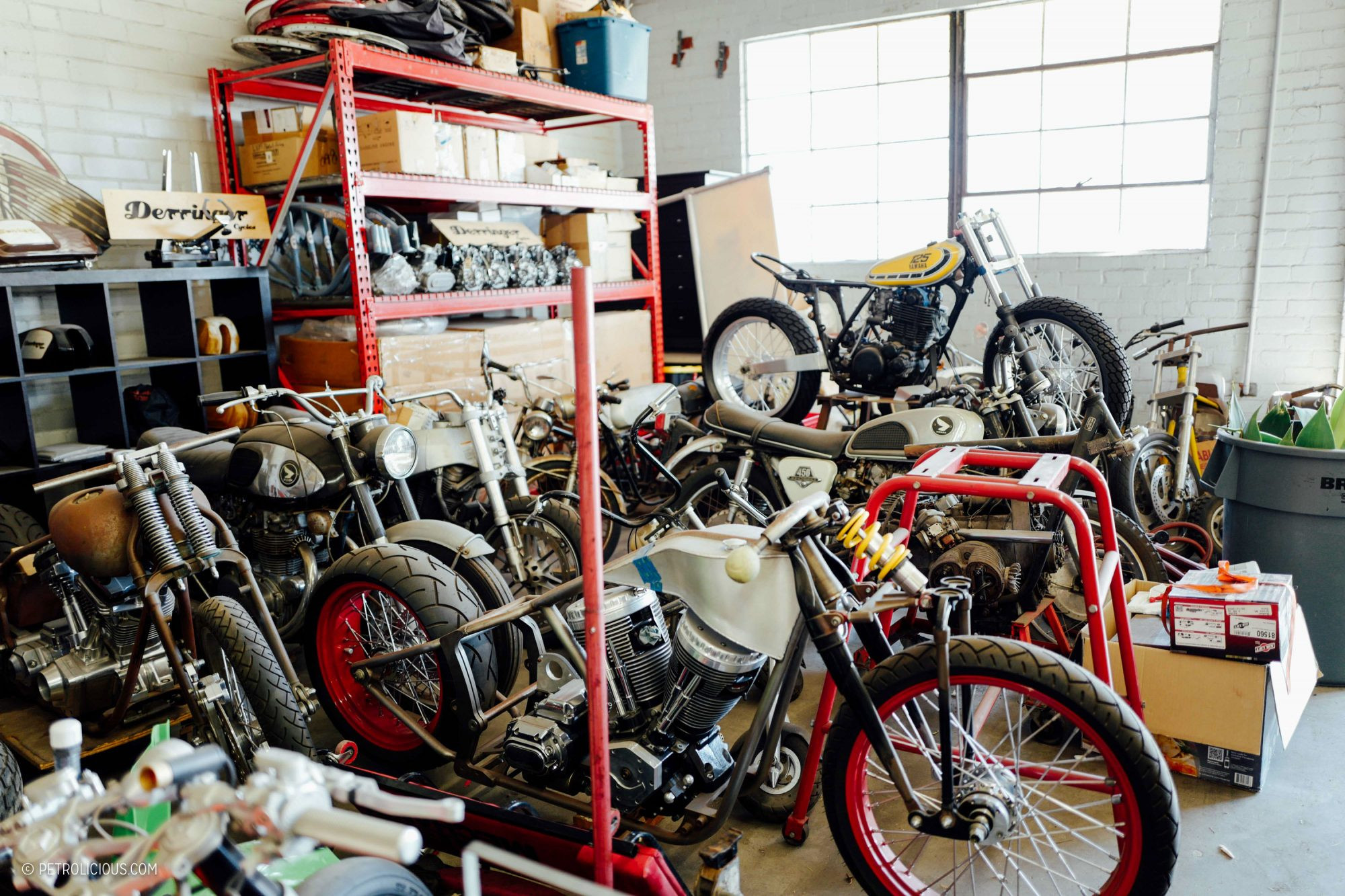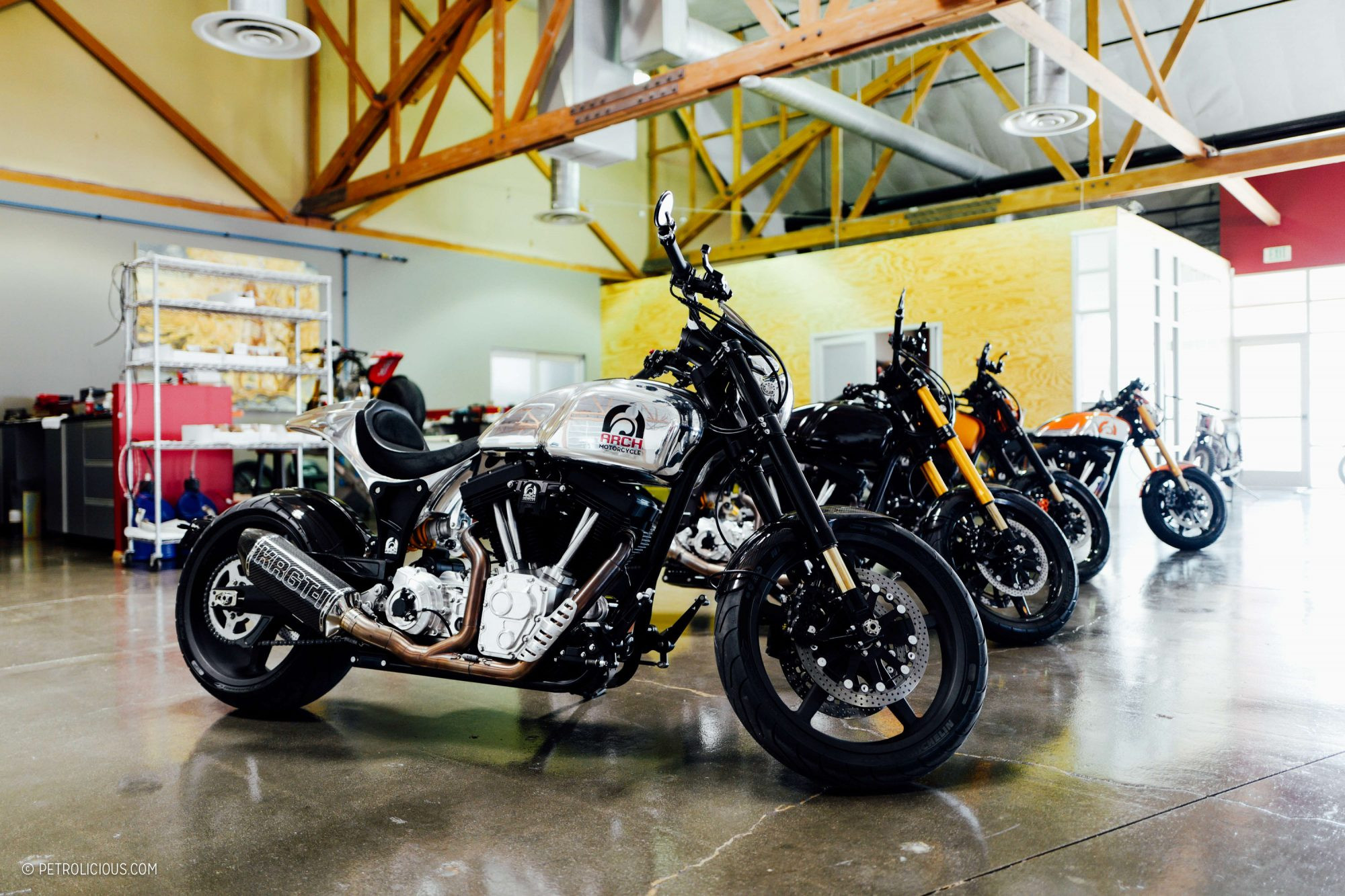We all share that fantasy: embarking on a venture with a close friend. Be it a bar, a restaurant, a creative studio, or even a racing team, the allure of building something together is universally appealing. For Gard Hollinger, the culmination of a deeply invested custom bike project at his shop initially signaled a desire to move on, to explore new horizons. However, the client, Keanu Reeves, had a contrasting vision. Instead of closure, Keanu saw a beginning, proposing to Gard the launch of a new motorcycle company, using the very bike Gard had just completed as their foundational prototype – the “Keanu Reeves Bike” that would change everything.
To understand the genesis of Arch Motorcycles, one must delve into Gard Hollinger’s lifelong journey with motorcycles. His fascination began in the Hollywood Hills of the 1960s, a time before BMX bikes dominated the streets. Young Gard and his friends, armed with Schwinn Stingrays, would explore their hilly neighborhood. His world shifted when he witnessed a local teenager named Rick effortlessly wheelie a modified Honda 50 mini bike. Mesmerized, Gard’s curiosity turned into obsession when Rick offered him a ride. “That was it,” Gard recalls, “I was just done.” The hook was set, and motorcycles became an integral part of his life.
Gard’s family background wasn’t steeped in automotive culture. His stepfather, working in radio and advertising, appreciated cars in a typical mid-century fashion, perhaps owning a Firebird convertible. It was Gard’s relentless fascination with mini bikes that eventually led to his first motorized possession: a purple Taco 22 mini bike. Its basic design, featuring a small engine akin to a lawnmower, became Gard’s canvas for early mechanical explorations. He immediately began modifying it, soon upgrading to a Honda CT70, marking the start of a lifelong journey of tinkering and customization.
These formative years occurred against a backdrop of significant personal change. From a large junior high in East Hollywood, Gard transitioned to a small island school in the Pacific Northwest after his parents’ divorce. This stark change in environment, from a bustling city to a secluded island, amplified his focus on motorcycles. While his peers navigated typical teenage experiences, Gard was immersed in drawing motorcycles in class, his obsession deepening in the relative isolation of island life.
His passion wasn’t merely observational; necessity fueled his hands-on approach. Without mechanically inclined parents, Gard learned to repair and maintain his bikes himself. “It’s broken and I want to ride it, so how do I get it running?” became his mantra. This practical need evolved into a desire for modification and improvement, marking his early steps into motorcycle mechanics and customization. This self-taught expertise paved the way for his entry into motorcycle racing and, eventually, entrepreneurship within the motorcycle industry.
Gard’s initial foray into the business side of motorcycles began with co-founding Duval and Junior, a company specializing in protective gear for off-road bikes. Manufacturing aluminum components like disc brake and exhaust pipe protectors, Duval and Junior catered to the off-road motorcycle community. This venture expanded as he and his partner opened a motorcycle dealership in West Seattle. By his early twenties, Gard was not only racing motorcycles, even reaching national levels, but also navigating the complexities of running motorcycle-related businesses. He also honed his skills as a marine mechanic, further broadening his mechanical expertise.
However, the intense immersion in motorcycles led to burnout by his mid-twenties. Feeling he had dedicated his life to bikes with limited tangible return, Gard considered leaving the motorcycle world behind. This feeling, akin to athletes burning out after years of dedicated training, was compounded by the constant need to self-fund his passion. Yet, the allure of motorcycles proved too strong to resist permanently.
 Gard Hollinger in his workshop, showcasing his expertise and passion for motorcycle design.
Gard Hollinger in his workshop, showcasing his expertise and passion for motorcycle design.
The creative spark reignited in the early to mid-1990s, inspired by Russ Tom, whose family owned a Harley Davidson dealership. Russ was crafting unique motorcycles using Harleys as a base, introducing Gard to the artistic potential within motorcycle customization. This inspiration shifted Gard’s perspective, viewing motorcycles not just as machines but as artistic mediums. He soon ventured out on his own, establishing his path in the world of custom motorcycle building.
Returning to Los Angeles in 1994, Gard initially explored acting, drawn to the creative process. However, he found the auditioning and business aspects unappealing. Seeking to reconnect with motorcycles, he responded to an ad for a mechanic at a Harley shop in West L.A. Expecting to find himself at the renowned Bartels’ Harley-Davidson, he instead landed at a smaller shop called Bad Bikes in Culver City. Working for Ed Hastie, the owner, Gard operated as a private contractor, paid per job, highlighting his entrepreneurial spirit even in an employee role.
After a brief period at Bad Bikes, Gard’s entrepreneurial drive led him to establish his own shop. Customer demand from his previous role followed him, leading to the creation of Ziggy Harley in Canoga Park in 1997, in partnership with a former client. This venture marked a significant step, evolving further with an opportunity to become an Indian Motorcycle dealer during the Gilroy Indian era. This dealership, located across from Bartels’ in Marina Del Rey, was envisioned not just as a retail space but as a platform to explore creative motorcycle designs, drawing inspiration from Russ Tom’s Harley customization approach.
 Close-up of the Arch Motorcycle engine, emphasizing the detailed craftsmanship and performance engineering.
Close-up of the Arch Motorcycle engine, emphasizing the detailed craftsmanship and performance engineering.
When Indian Motorcycles abruptly closed their factory in 2002, Gard’s focus shifted to Chop Rods, a custom shop concept that had been developing alongside the Indian dealership. Chop Rods became synonymous with high-end, bespoke motorcycle builds, attracting a discerning clientele in the Los Angeles area and beyond. It was through Chop Rods that Gard’s path intersected with Keanu Reeves, setting the stage for the birth of Arch Motorcycles.
The connection began through a mutual acquaintance working for Bill Wall, a leather and silver artist in Malibu. This friend contacted Gard with a proposition: Keanu Reeves, a Bill Wall customer, owned a modified 2005 Harley Dyna and needed a custom sissy bar. Gard’s initial reluctance stemmed from a desire to focus on personally fulfilling projects. However, he agreed to meet Keanu and examine the bike. When Keanu directly asked, “Do you want to build me a sissy bar?” Gard’s response was a polite but firm, “No, not really.”
Gard’s stance was rooted in a commitment to his creative vision. Having spent years fulfilling others’ motorcycle customization requests, Chop Rods was his declaration of independence, a space to build what he was passionate about. This directness intrigued Keanu. Upon asking what Gard did do, Keanu was invited to the Chop Rods workshop, where he witnessed the quality and unique style of Gard’s custom builds.
This shop visit sparked a conversation about modifying Keanu’s Dyna, a project that organically expanded over four years. Gard recognized Keanu’s genuine interest in the design and build process. Keanu’s feedback and vision for the motorcycle challenged and inspired Gard. The project unfolded in stages, punctuated by pauses to accommodate Keanu’s schedule, allowing for collaborative refinement. The culmination of this extended process was the prototype – the original “keanu reeves bike” that would become the cornerstone of Arch Motorcycles.
This prototype was more than just a custom bike; it was the first project where Gard heavily utilized CAD design. The bike’s digital blueprint evolved almost in tandem with its physical construction, creating a design that felt both familiar and strikingly new, akin to a concept bike. Even before its completion, as the bike took shape in both the digital and physical realms, Keanu began suggesting, “Man, that thing is beautiful. What if we made some more of them?”
Gard, self-proclaimed “no” guy, initially resisted. However, upon completion and test rides, the unique riding experience of the prototype became undeniable. Keanu’s persistence led to weeks of discussions, with Gard presenting numerous reasons against starting a motorcycle company. He peppered Keanu with questions and potential pitfalls, meticulously outlining the challenges of such an undertaking.
 Keanu Reeves riding an Arch Motorcycle, showcasing the bike's performance and design in motion.
Keanu Reeves riding an Arch Motorcycle, showcasing the bike's performance and design in motion.
The turning point arrived when Keanu countered Gard’s negativity with a simple question: “Can you tell me some reasons why we might want to do this?” This positive framing prompted Gard to reconsider. His final, decisive question was, “If there was just one reason you had to say why we shouldn’t do this, what is it?” Keanu’s thoughtful response, “Because we’re going to die someday,” resonated deeply. He articulated a desire to create something special, something they were both passionate about, a legacy.
This perspective shifted Gard’s hesitation into commitment. He recognized the opportunity to fully embrace his lifelong passion for motorcycles, not just as a personal pursuit but as a shared creative venture. The idea of building a motorcycle company, something he had previously deemed “hubristic,” became compelling with Keanu as a partner.
Gard acknowledges that Arch Motorcycles wouldn’t exist without Keanu Reeves. While he was already successful building one-off custom bikes at Chop Rods, the leap to manufacturing replicable, high-performance machines was a different challenge entirely. This transition, demanding precision engineering and consistent quality, intrigued Gard. He had explored similar challenges in consulting for other small motorcycle manufacturers, sparking an interest in pushing the boundaries of motorcycle design and production.
The artistic fulfillment in creating unique, one-off pieces was undeniable, but the challenge of designing a motorcycle that could be consistently reproduced, maintaining both artistic integrity and engineering excellence, proved even more compelling. This blend of artistic vision and manufacturing rigor became the driving force behind Arch Motorcycles.
 Gard Hollinger and Keanu Reeves collaborating on motorcycle design, highlighting their partnership and shared vision.
Gard Hollinger and Keanu Reeves collaborating on motorcycle design, highlighting their partnership and shared vision.
The partnership between Gard and Keanu is central to Arch’s ethos. Gard emphasizes the purity of their vision, free from consumer surveys and market research. Arch Motorcycles is driven by their shared passion, a commitment to creating unique, high-quality machines that reflect their combined sensibilities. This dedication to their vision, despite potential criticisms, fuels their continued innovation and energy. Their “two-buddy research” approach, focused on their own passion and intuition, has resonated with a dedicated audience, establishing Arch Motorcycles as a distinctive voice in the motorcycle industry. The “keanu reeves bike,” born from a custom project, became the catalyst for a company built on friendship, passion, and a shared vision for exceptional motorcycles.
Special thanks to Gard at Arch Motorcycles for sharing the story of Arch Motorcycle’s beginnings.

